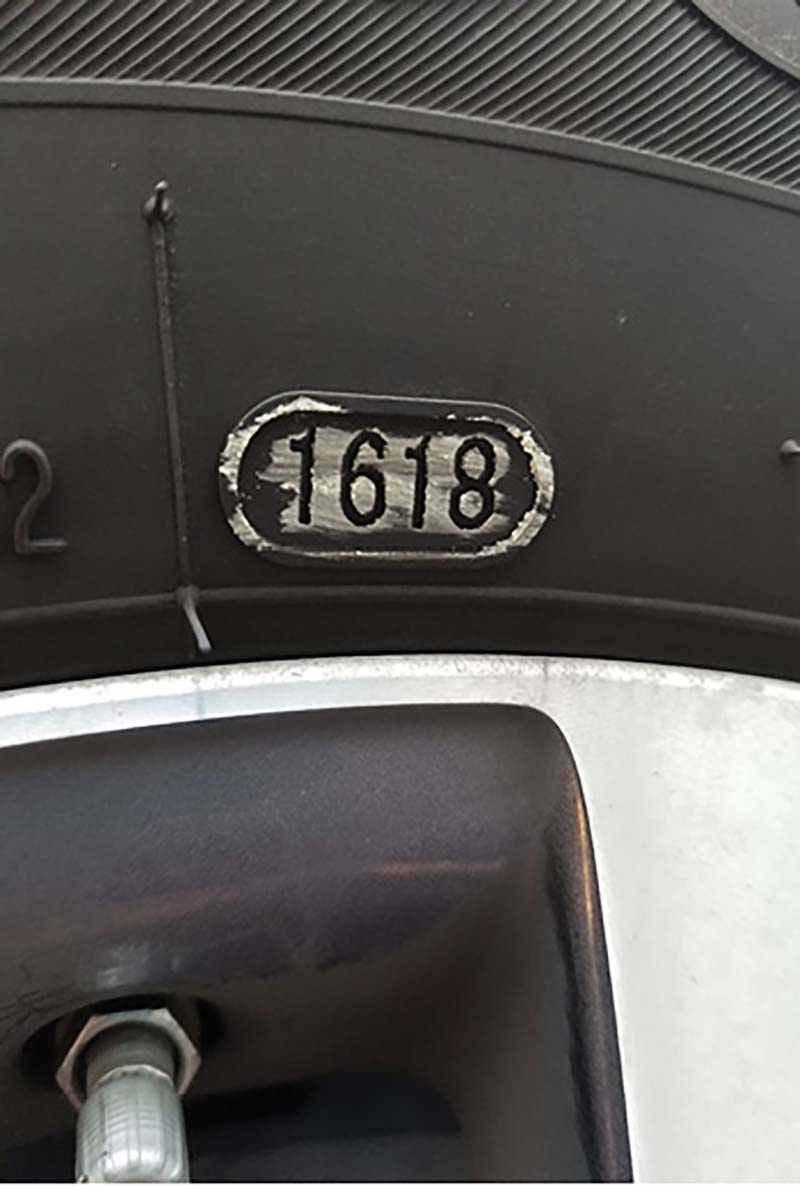Drive to Survive: Case Studies Chris Daly
On August 19, 2001, a fire apparatus crashed in Oregon, resulting in the death of a 52-year-old firefighter. The victim was driving a tanker back to the fire station after routine maintenance.
As the firefighter was driving on an interstate highway, he maneuvered to overtake a tractor trailer. During this maneuver, the right front tire blew out and the firefighter lost control of the apparatus. The apparatus left the roadway, striking a boulder and a large tree. During the course of the crash, the victim sustained fatal injuries.
DRIVER CONSIDERATIONS
A subsequent investigation revealed that the failed tire was approximately 22 years old and in obviously old and brittle condition. During a post-crash inspection, state police investigators determined that the outer shell of the tire was brittle and cracked. In addition, there were openings in the tire tread that had allowed moisture to attack the steel tire cords, as evidenced by rust on the cords.
Fire apparatus operators must understand how to inspect and read the age of an emergency vehicle tire (photo 1). National Fire Protection Association (NFPA) 1911, Standard for the Inspection, Maintenance, Testing, and Retirement of In-Service Emergency Vehicles, states that no tire should be over seven years old. This is because ozone in the air, ultraviolet light, and normal wear and tear on a tire can cause a breakdown of the rubber compounds in the tire, causing them to dry out and become unsafe over time. Even if the tire tread has not worn down to a point that would require replacement, the tire may suffer other adverse effects from use and age that could result in a tire blowout.
Fire apparatus operators must also be familiar with the proper method of regaining control of a fire apparatus in the event of a tire blowout. Studies and nationally recognized training programs have demonstrated that in the event of a tire blowout, the fire apparatus operator should take a firm grip of the wheel; accelerate to regain forward momentum and control; and then, once he has the apparatus under control, gently reduce speed to come to a safe stop.
DRIVER TRAINING CONSIDERATIONS
Driver training programs should teach fire apparatus operators how to properly inspect a tire and how to read the manufacture date. As shown in photo 1, each tire should have a four-digit code printed on the sidewall of the tire. The first two digits are the week of the year that the tire was manufactured, while the last two digits are the year of manufacture. In the case of photo 1, the tire was manufactured in the 16th week of 2018. If a tire is more than seven years old, it is not compliant with NFPA 1911. When a tire is mounted, it should be mounted in such a way that this code is readily seen by anyone inspecting the tire. This is especially true for the inside dual tires, which are often overlooked during routine tire inspections.

1 This four-digit code indicates the date the tire was manufactured. The first two digits are the week of the year, and the last two digits are the year of manufacture. (Photo by author.)
Driver training programs should also address how to properly handle a tire blowout. Driver trainers can simulate a tire blowout by clapping their hands, blowing the air horns, or simply yelling “BANG!” Once the driver trainer simulates the tire blowout, the driver should respond appropriately by accelerating as necessary to regain control of the apparatus and then bringing the apparatus to a safe and controlled stop. An important teaching point during this exercise is that the driver should not be operating the apparatus at its maximum speed. If the apparatus is governed at 62 miles per hour (mph) and the driver is traveling 62 mph, there is no extra speed available should the driver need to accelerate and regain control.
RELEVANT NFPA DIRECTION
NFPA 1911, 8.3.6 states, “Tires shall be replaced at least every seven years or more frequently when the tread wear exceeds state or federal standards as determined by measuring with a tread depth gauge. [See 6.3.1(4)].”
NFPA 1911, 6.3.1(3)(4) states,“The following deficiencies of the chassis, axles, steering and suspensions systems, driveline, wheels, and tires shall cause the vehicle to be taken out of service: 3) Tires have cuts in the sidewall that penetrate to the cord. 4) Tires have a tread depth of less than 4⁄32 inches (3.2 mm) on any steering axle or 2⁄32 inches (1.6 mm) on any nonsteering axle at any two adjacent major tread grooves anywhere on the tire.”
RESOURCES
- “Fire Apparatus Rollovers, Part 14: Tires,” Fire Apparatus & Emergency Equipment, November 2020, explains the issues of tire age and safety in greater detail.
- Drive to Survive: The Art of Wheeling the Rig, Chapter 11 (Fire Engineering Books and Videos), explains the issues related to tire safety and tire blowouts.
- “Automotive Fire Apparatus Tire Replacement,” Fire Protection Research Foundation, March 2015, details the issues related to the need for tire replacement every seven years.
CHRIS DALY is a 25-year police veteran and an accredited crash reconstructionist (ACTAR #1863). In addition to his police duties, he has served in the fire service for more than 33 years, including time as both a career and volunteer firefighter, holding numerous positions, including the rank of assistant chief. Daly has a master’s degree in environmental health engineering from Johns Hopkins University and is a contributing author to Fire Apparatus & Emergency Equipment and Fire Engineering. He developed the “Drive to Survive” emergency vehicle driver training program, which has been presented to more than 26,000 firefighters and police officers across the United States and is author of Drive to Survive: The Art of Wheeling the Rig (Fire Engineering Books and Videos). Additional resources can be found at www.drivetosurvive.org.

